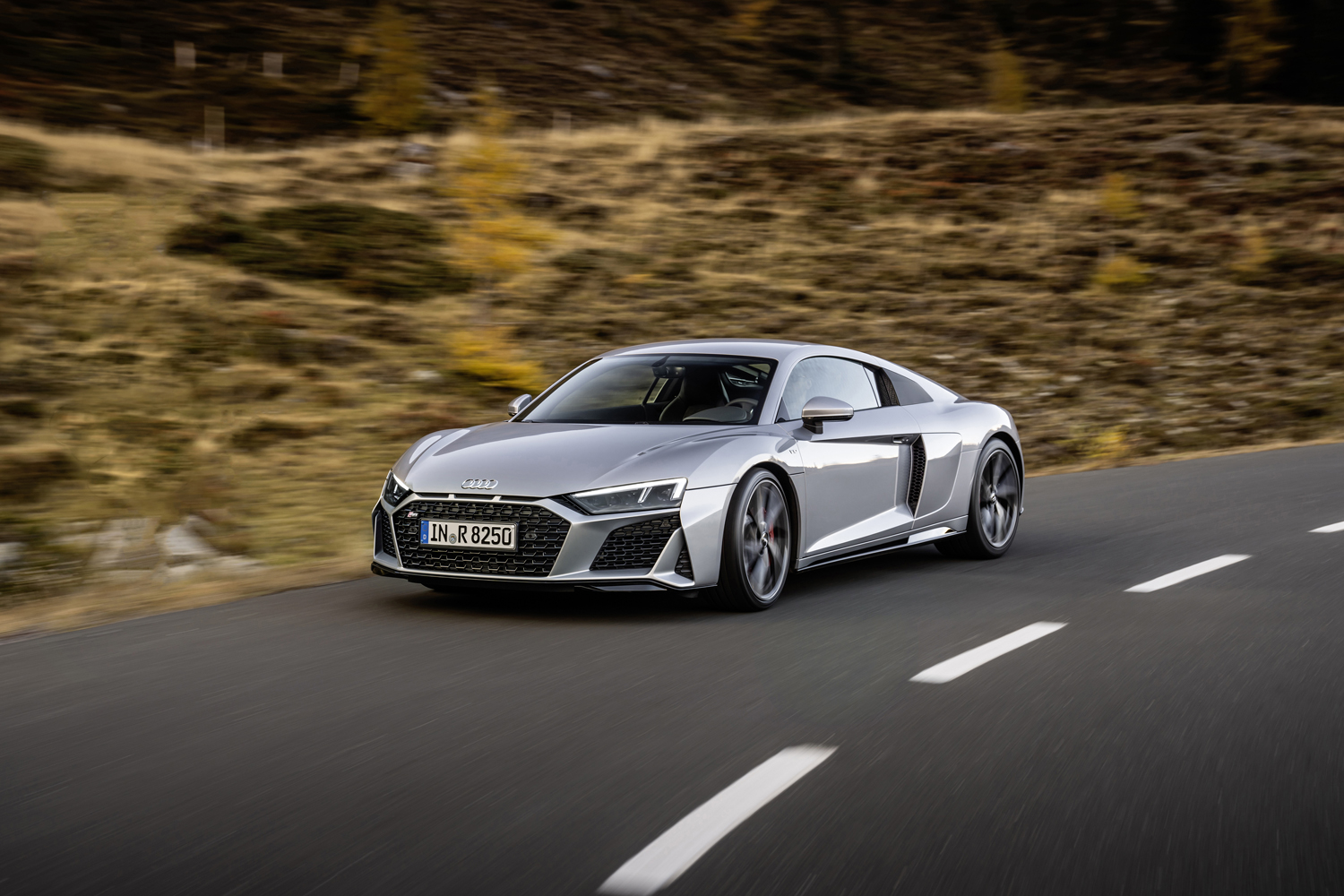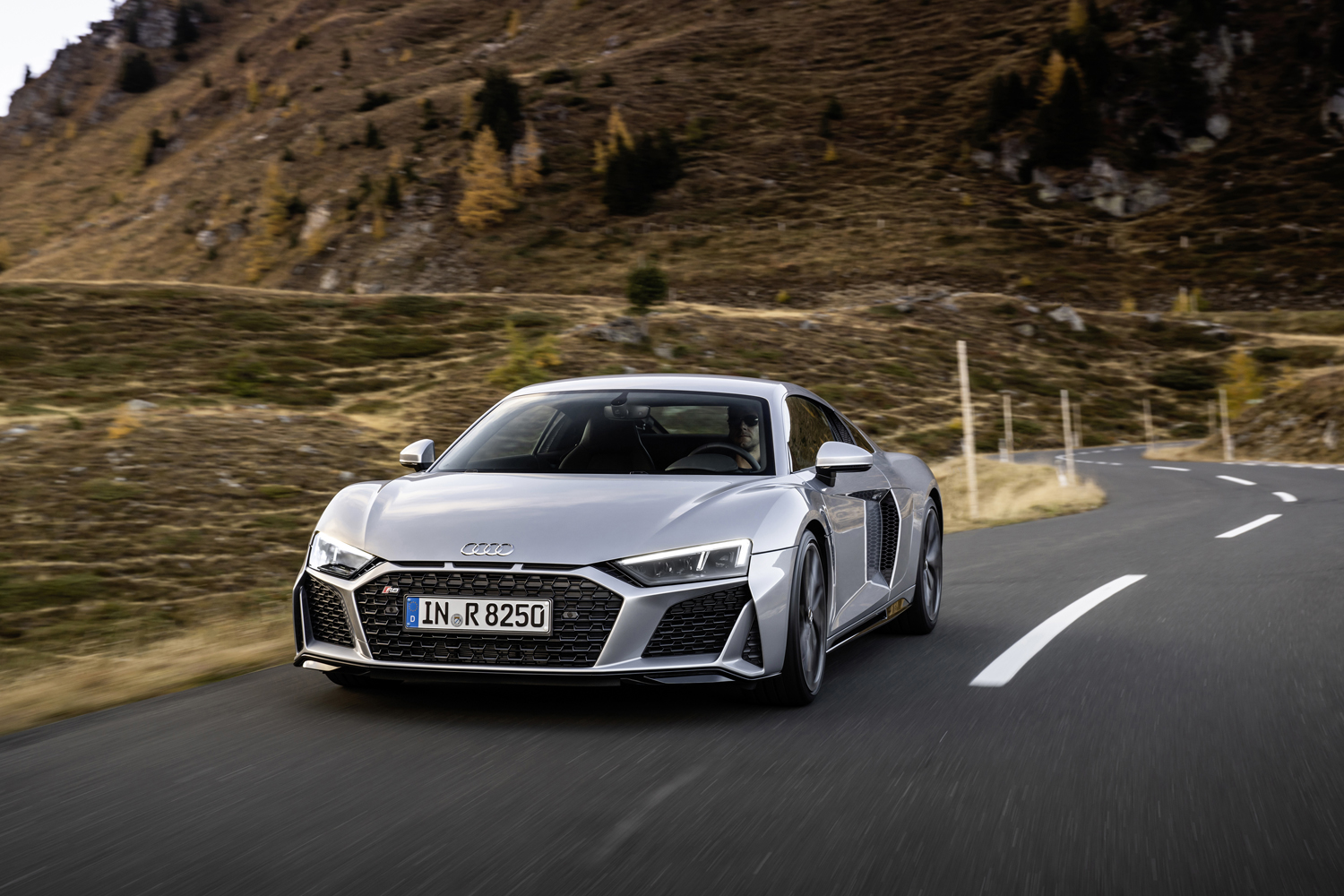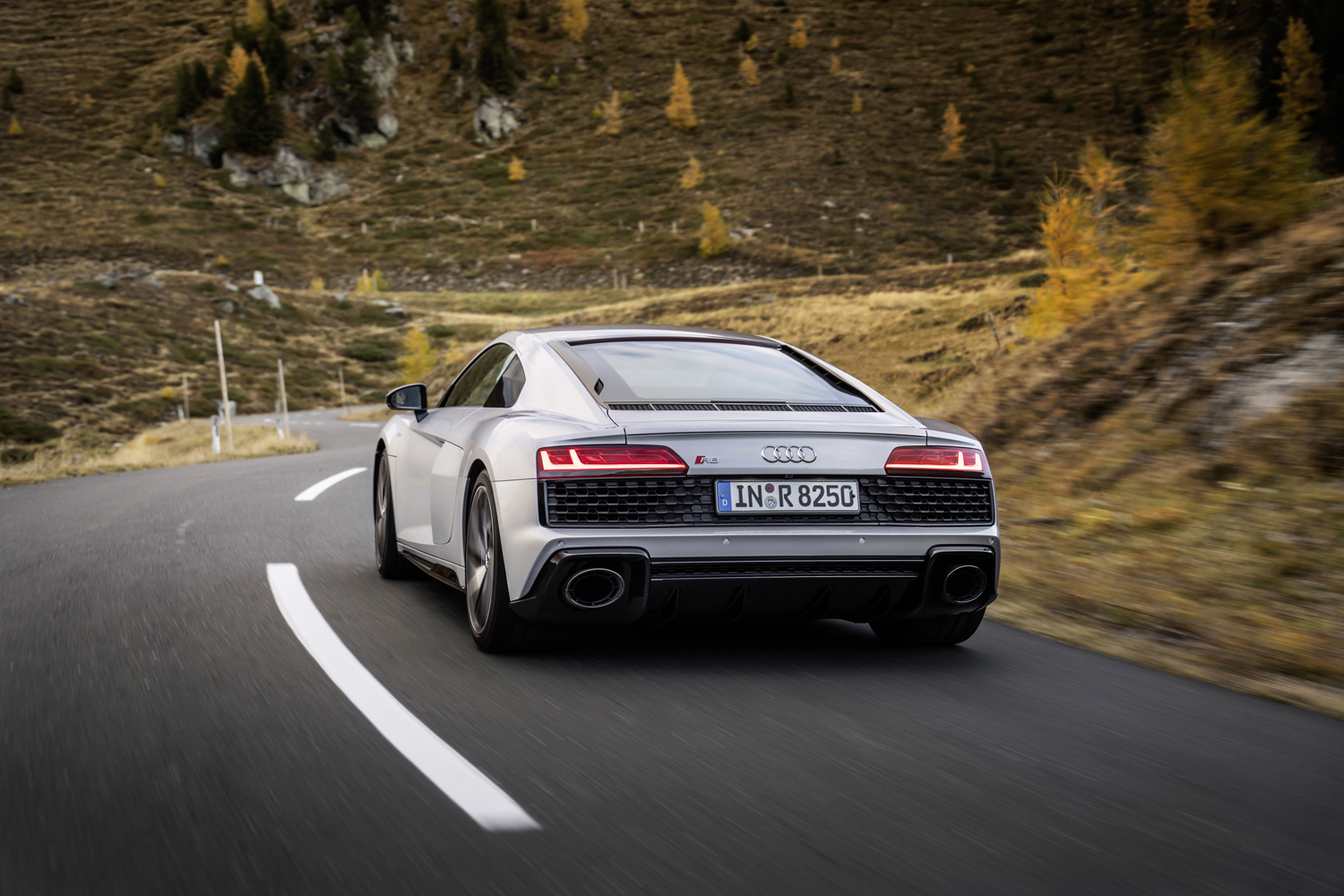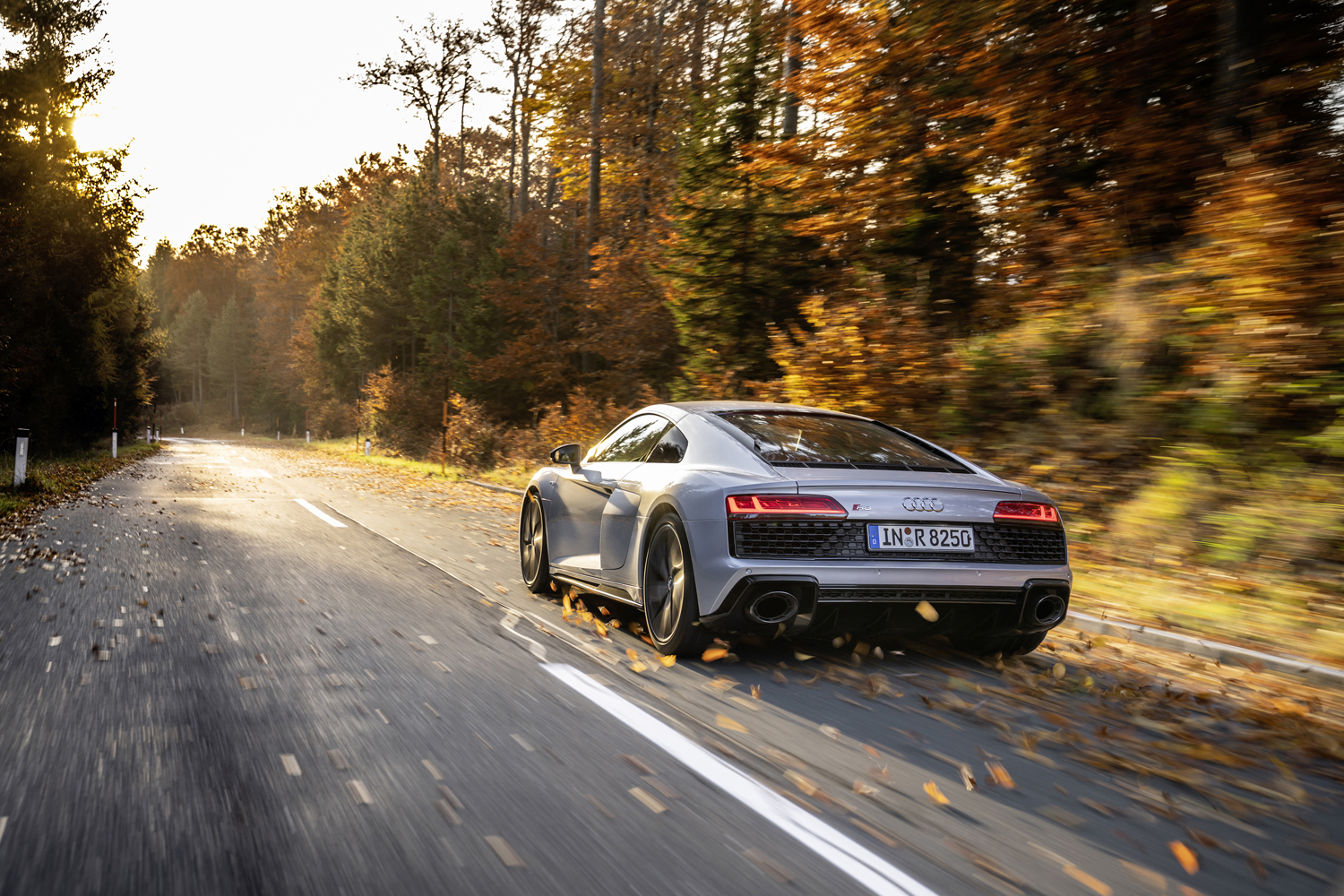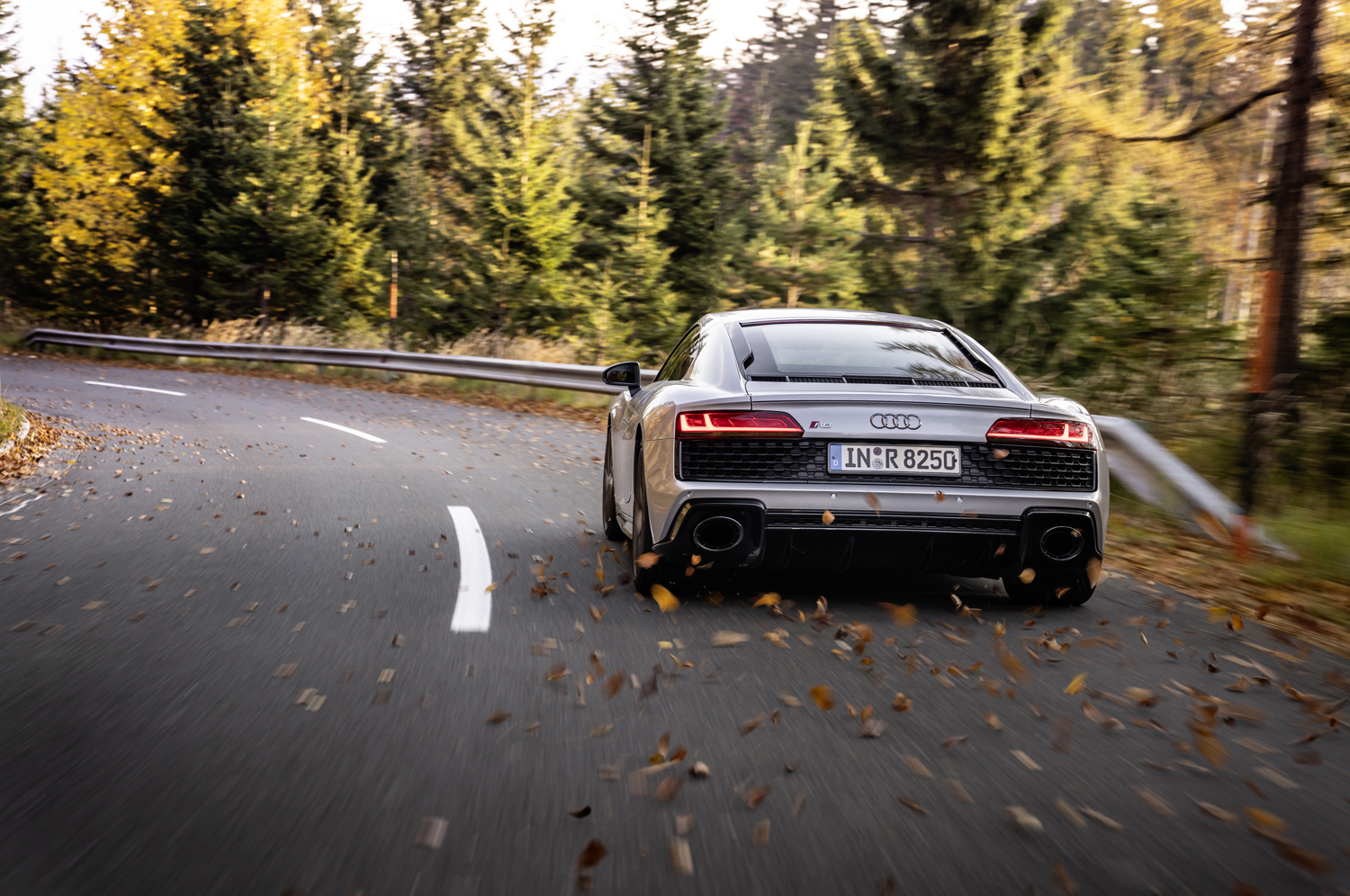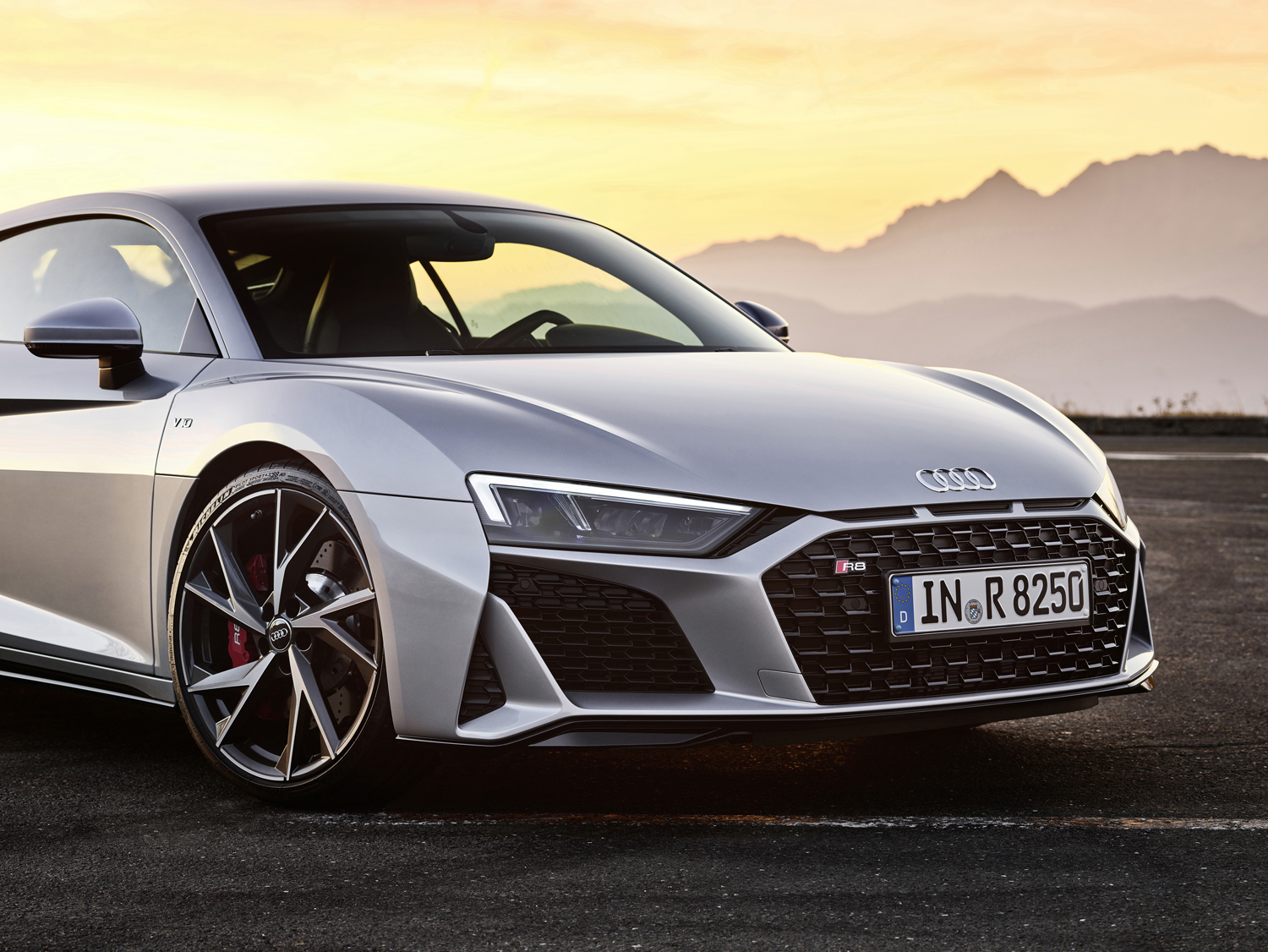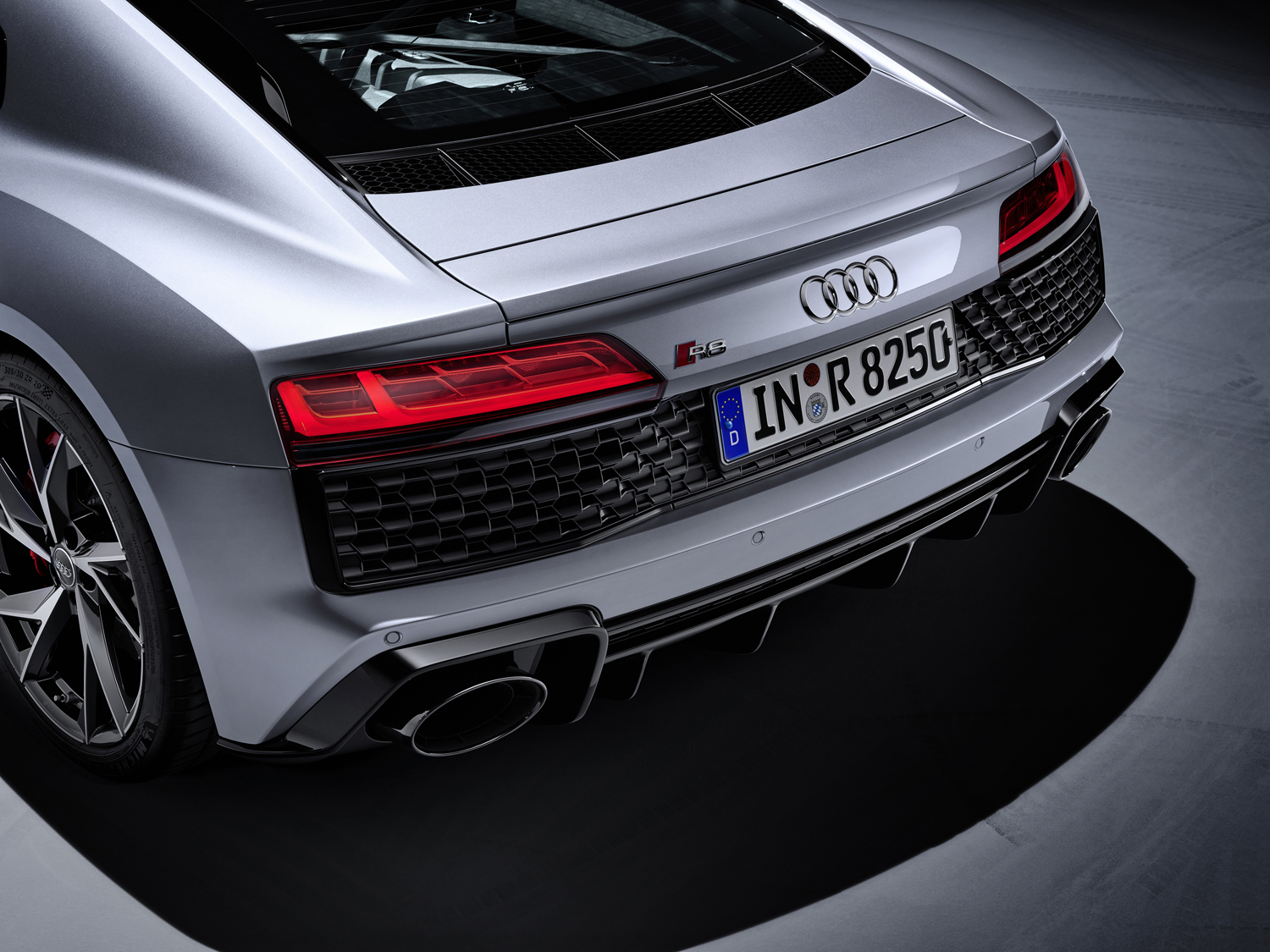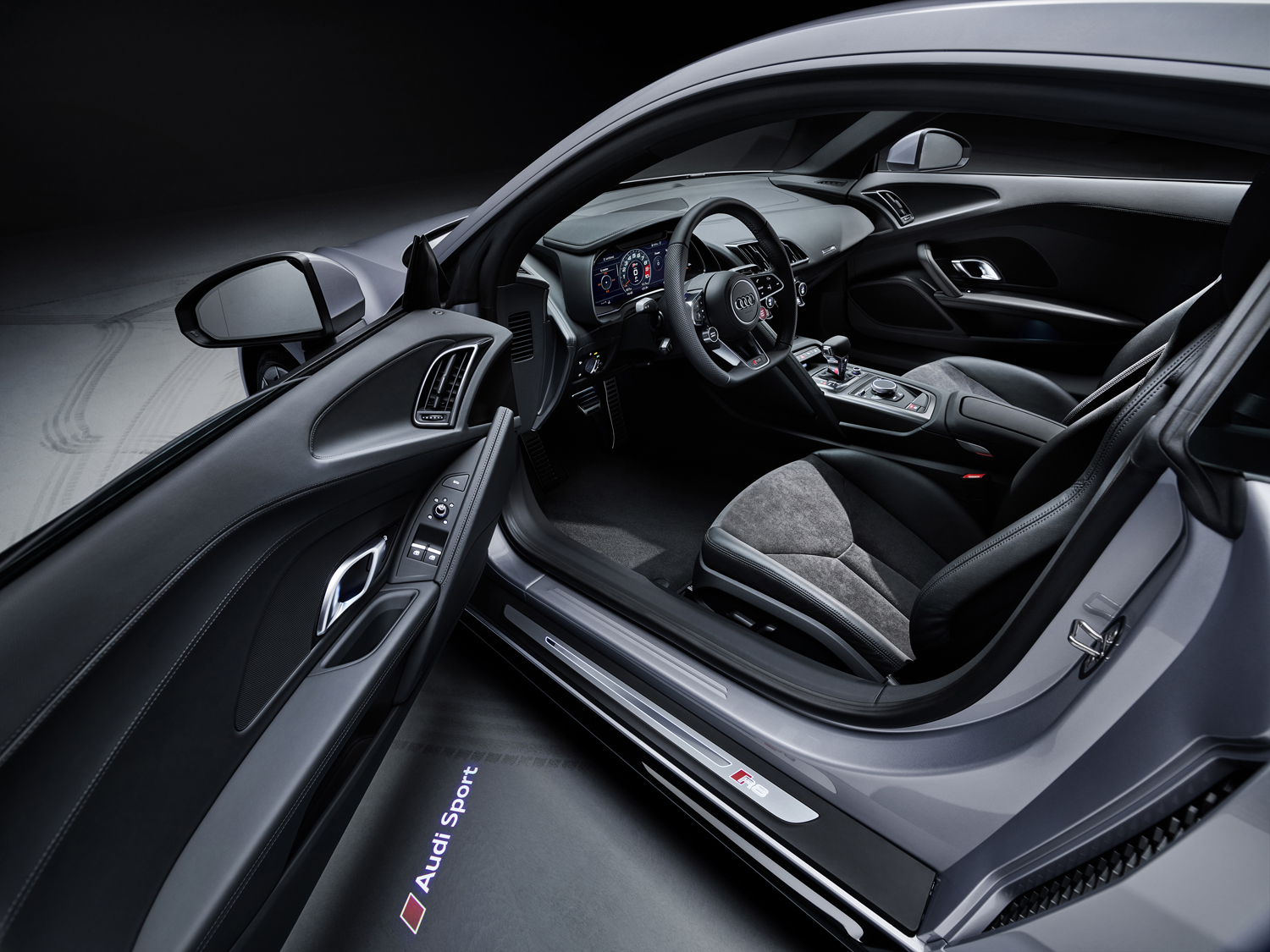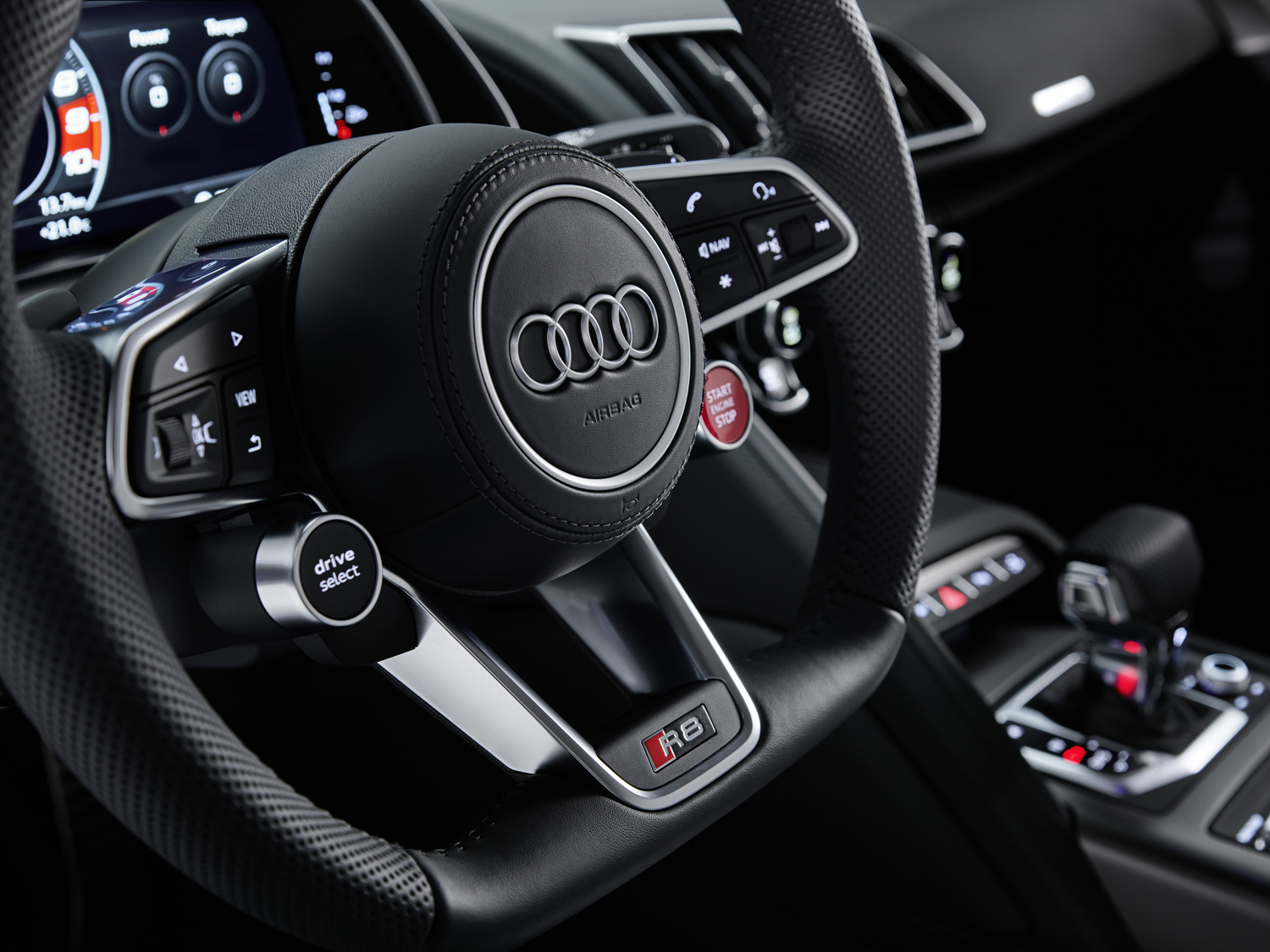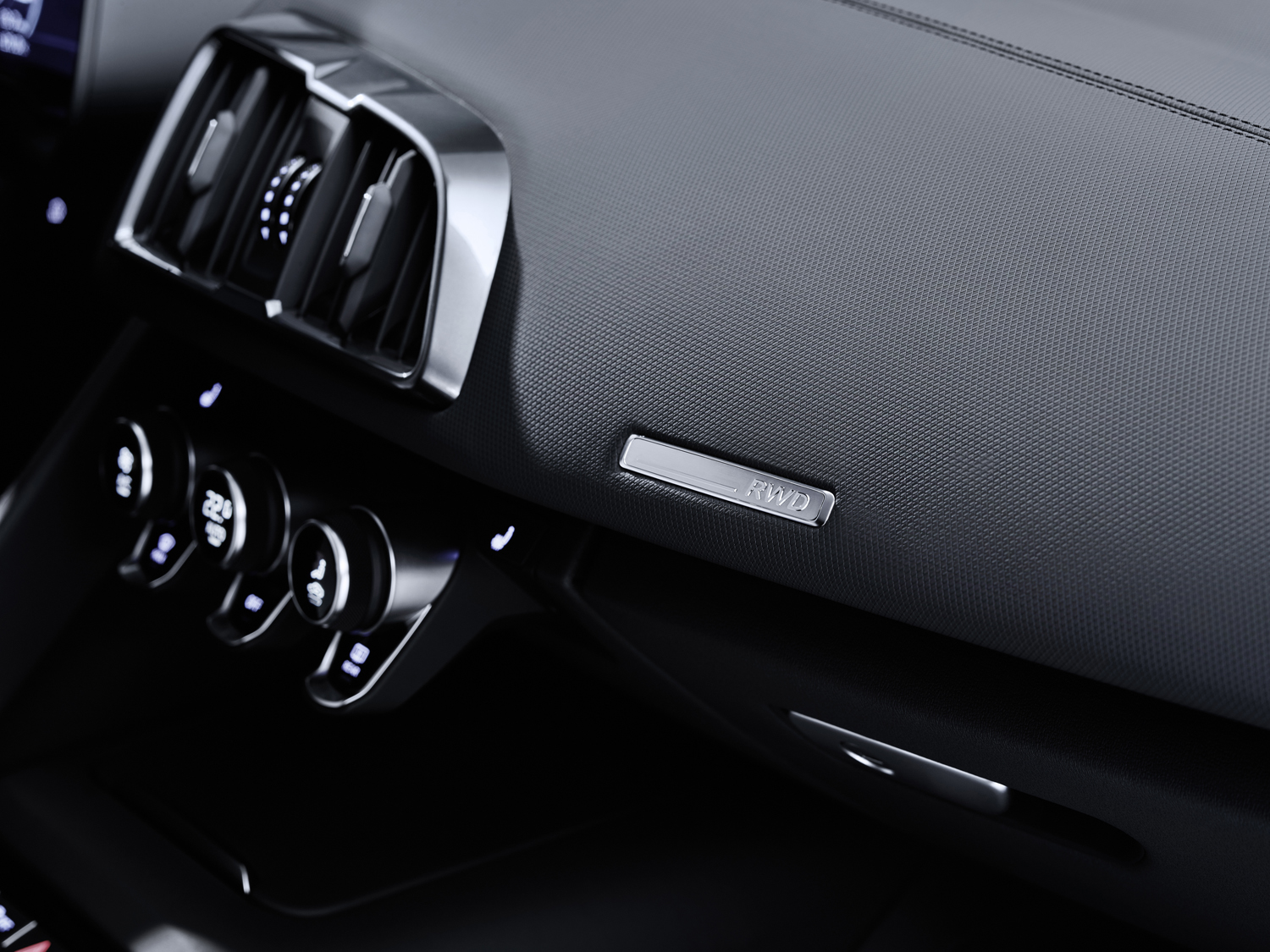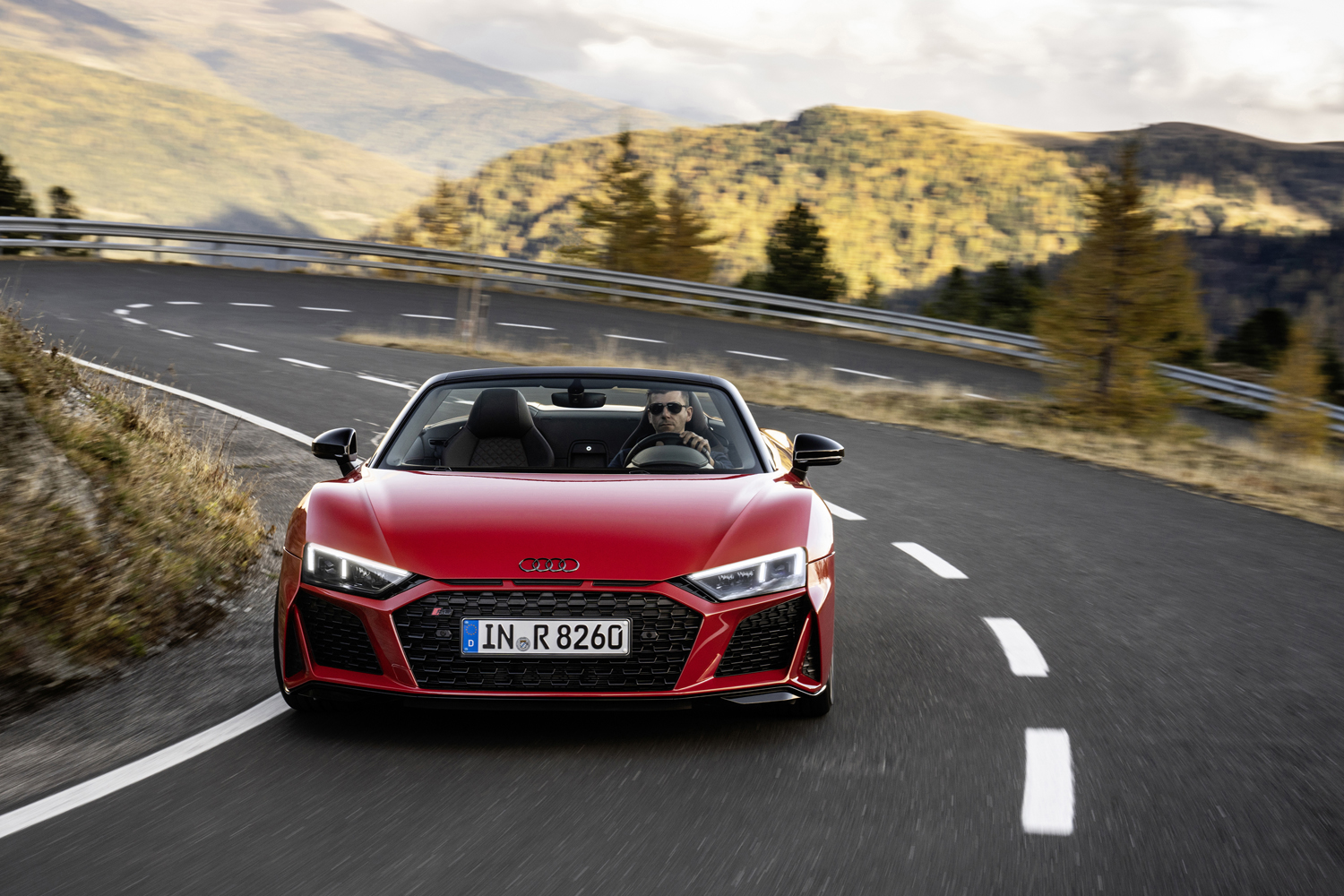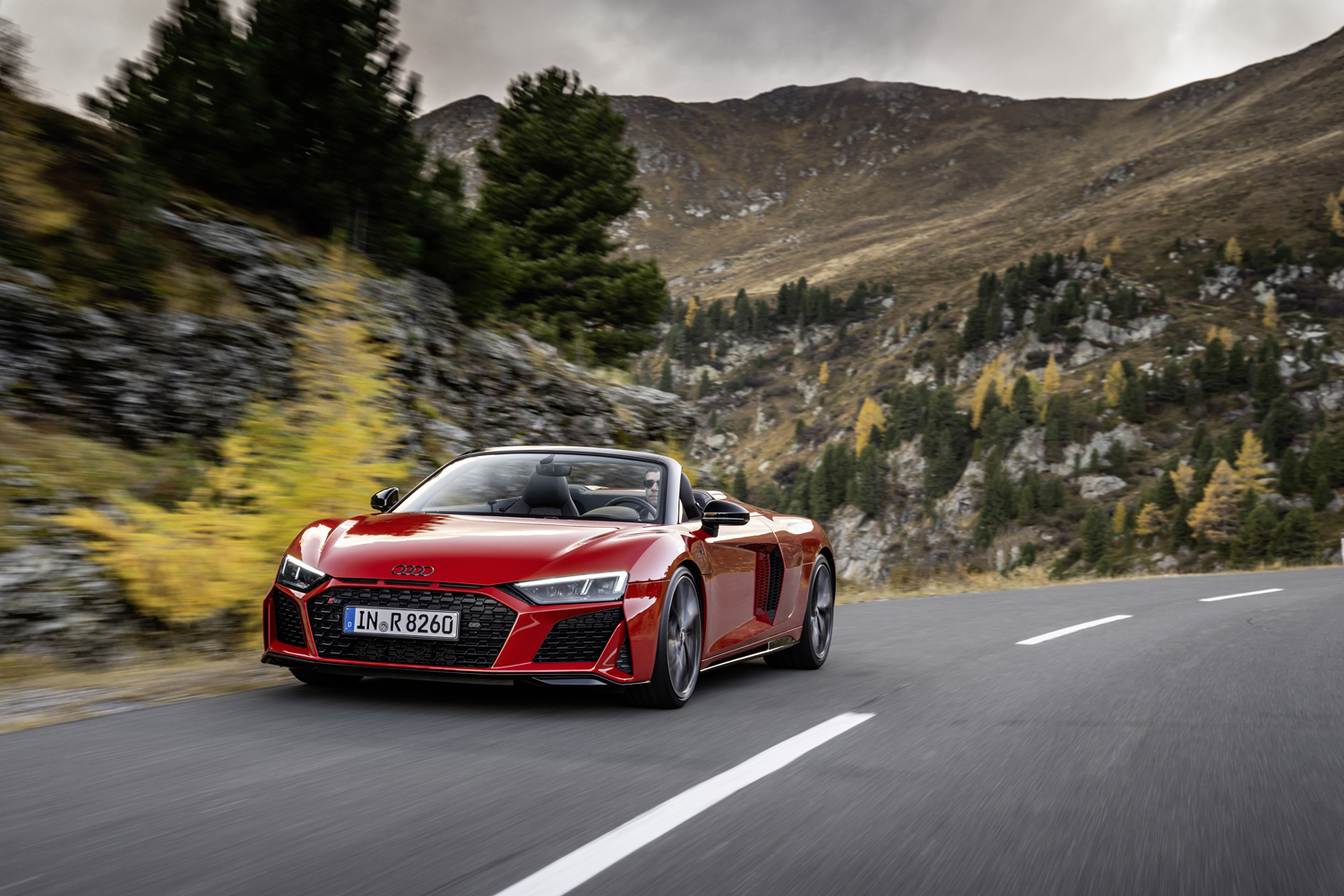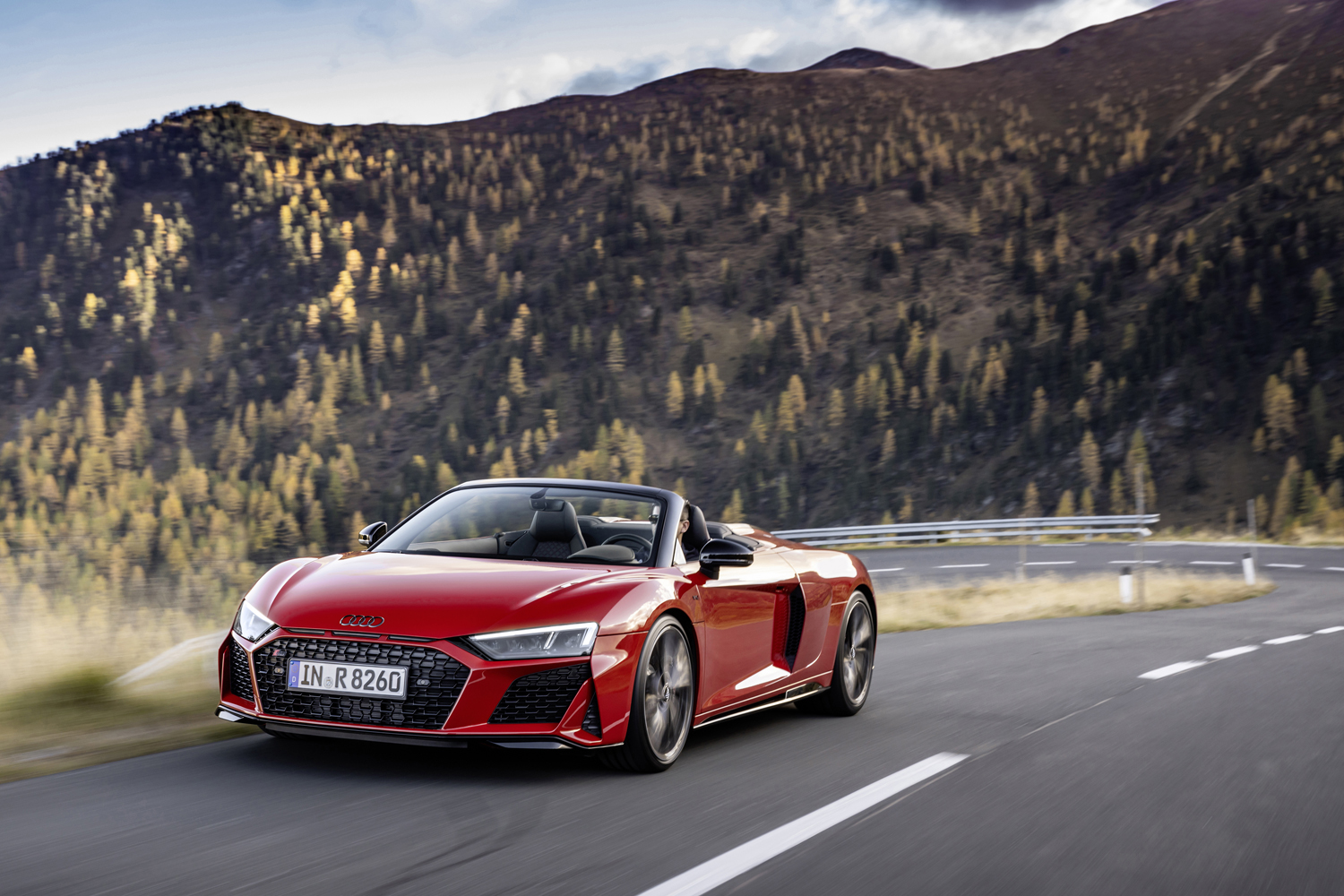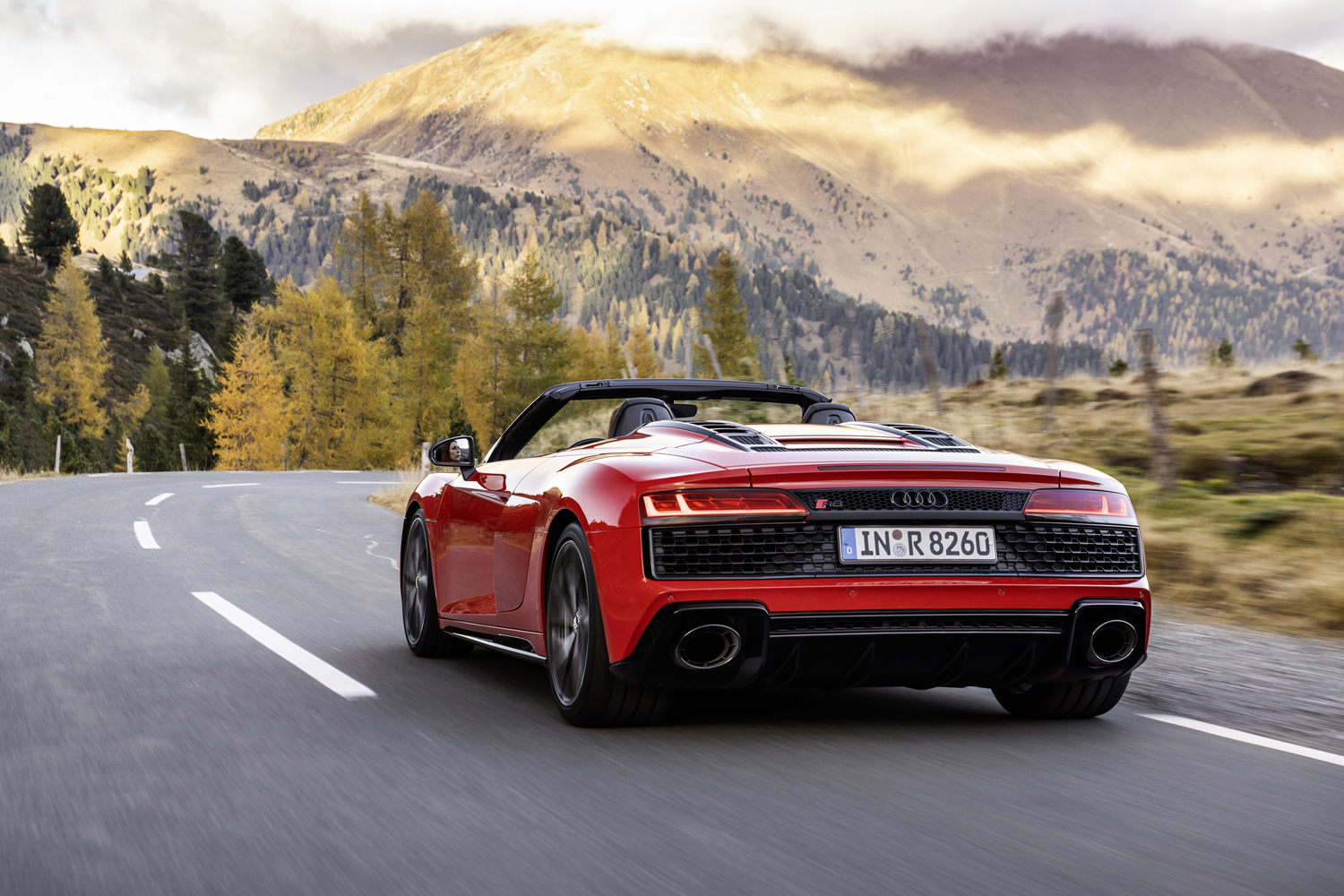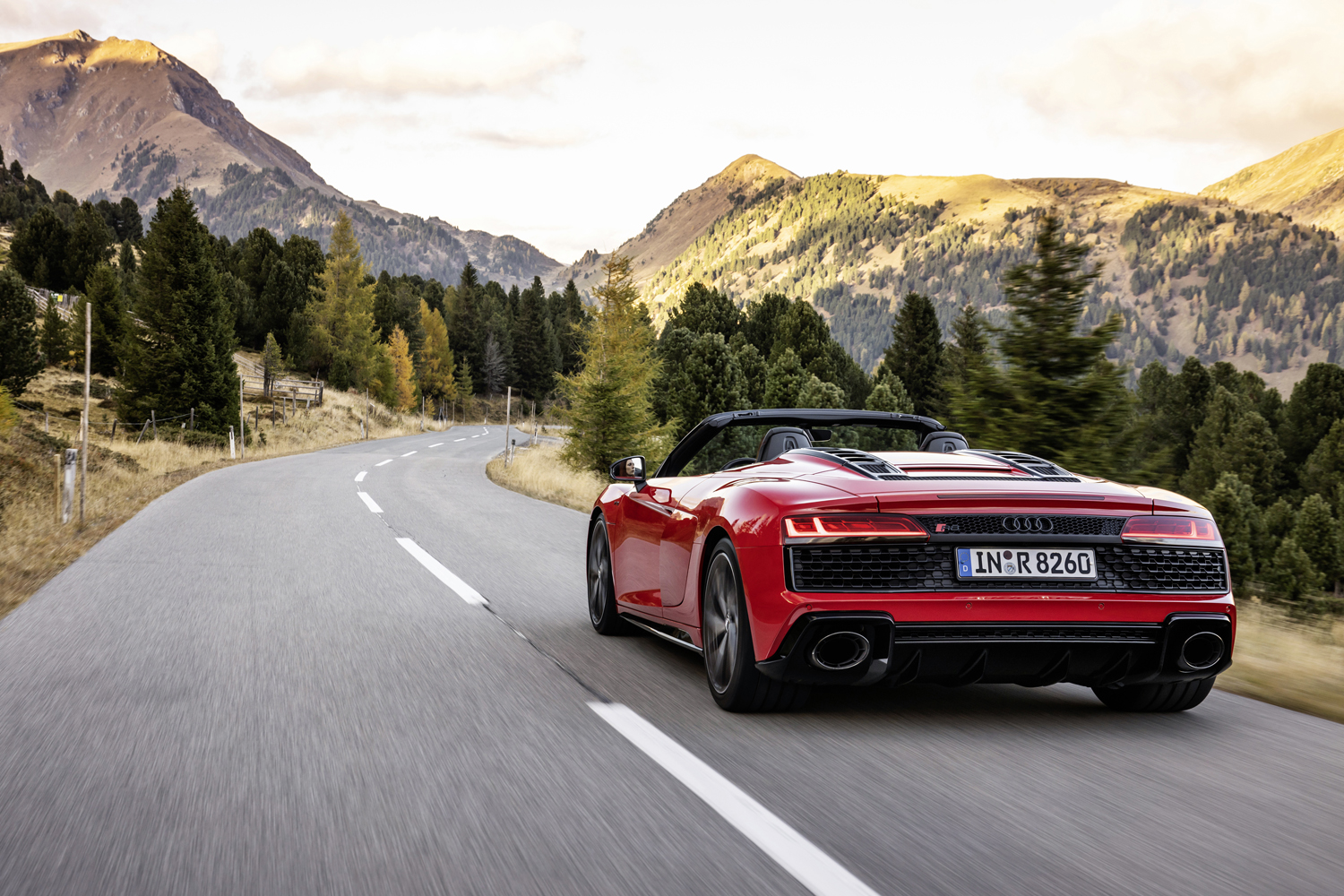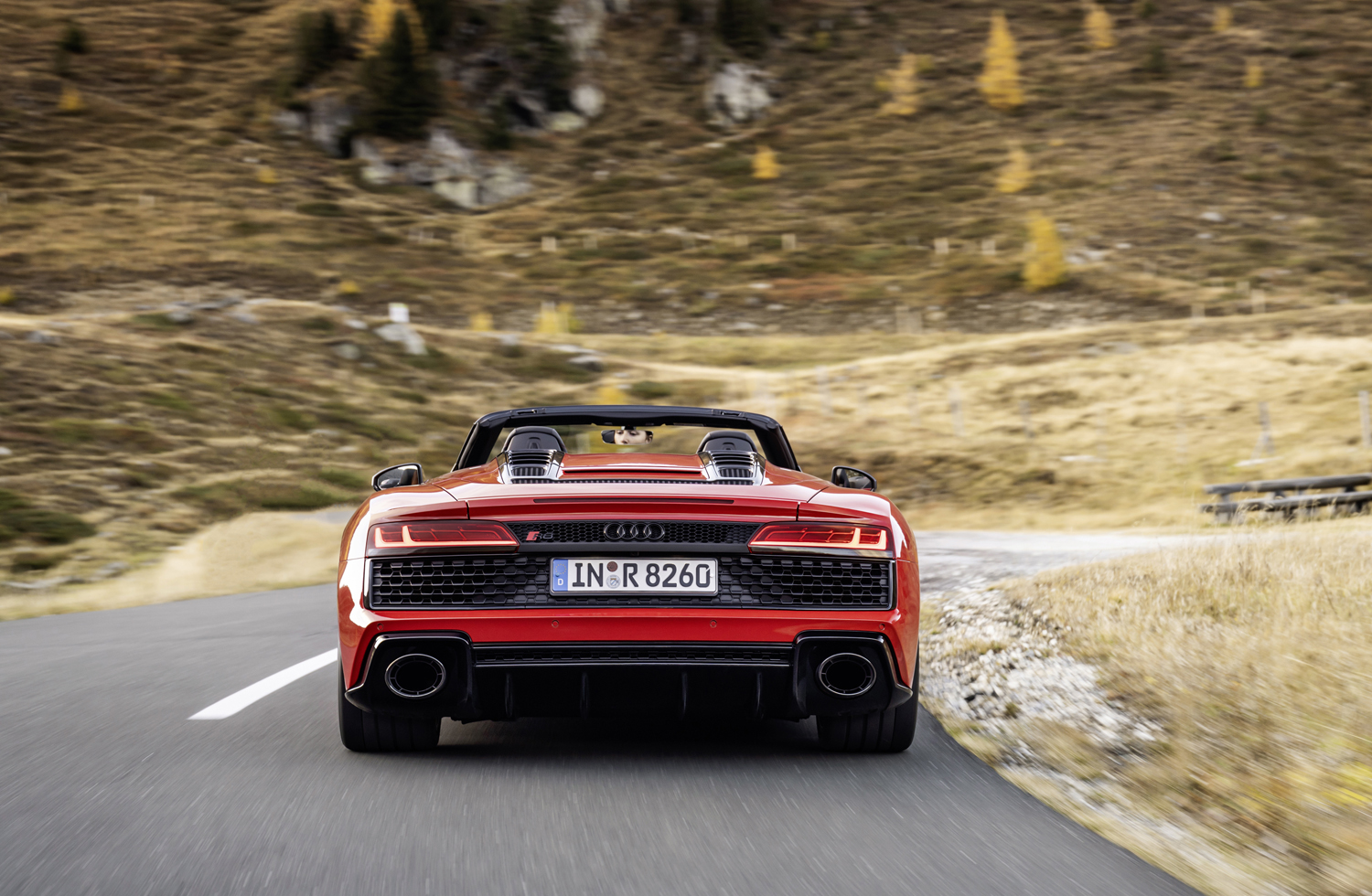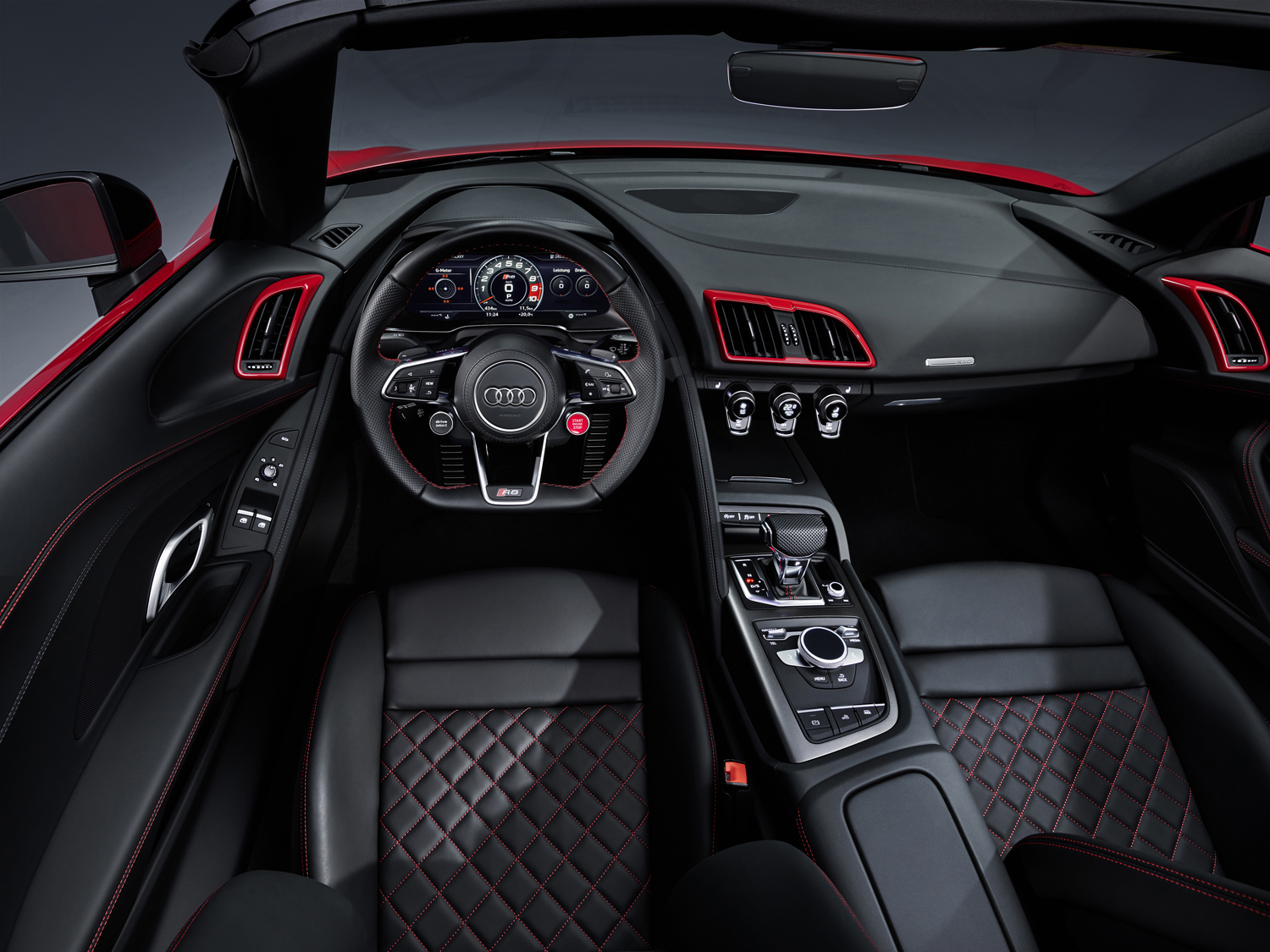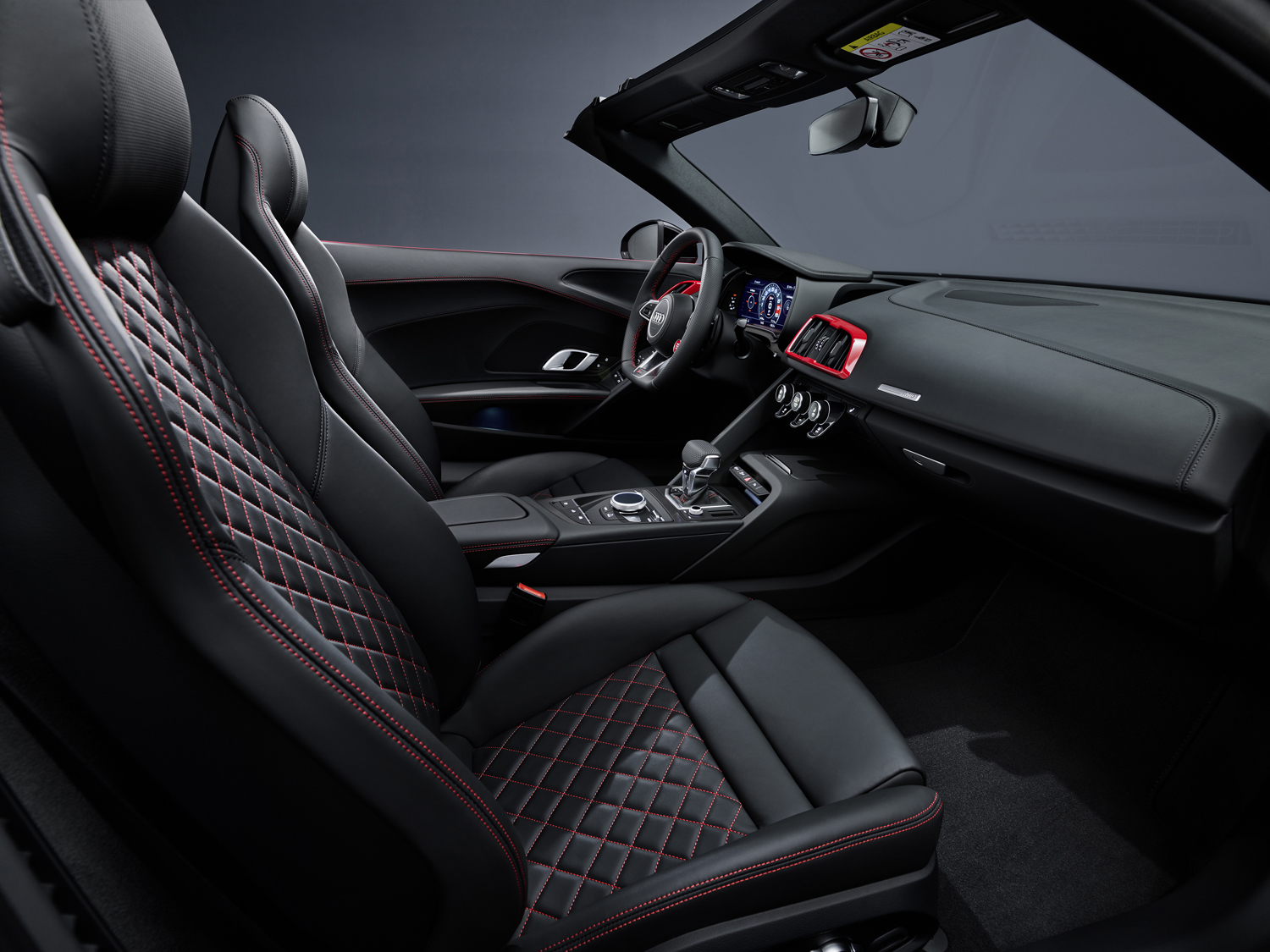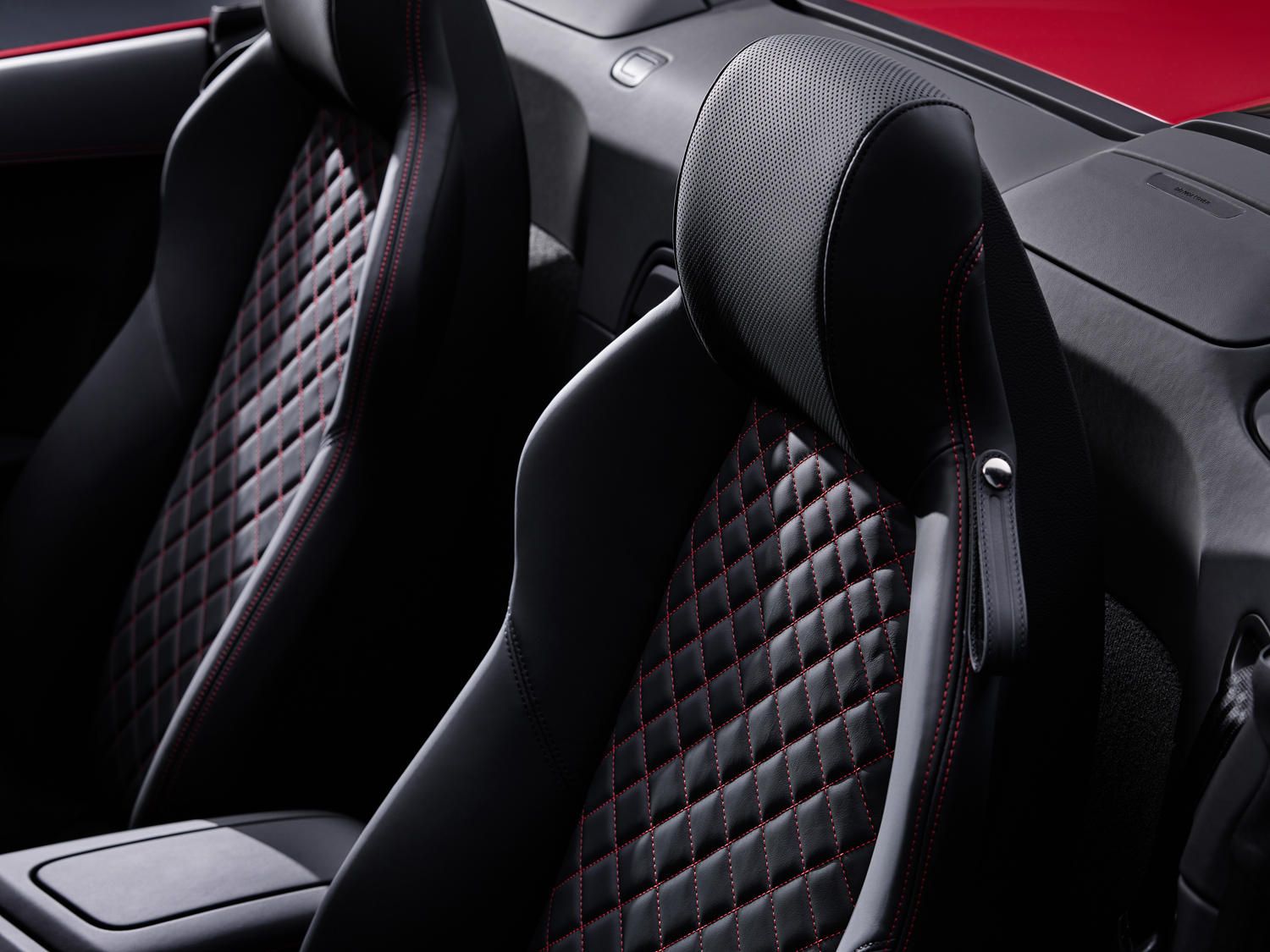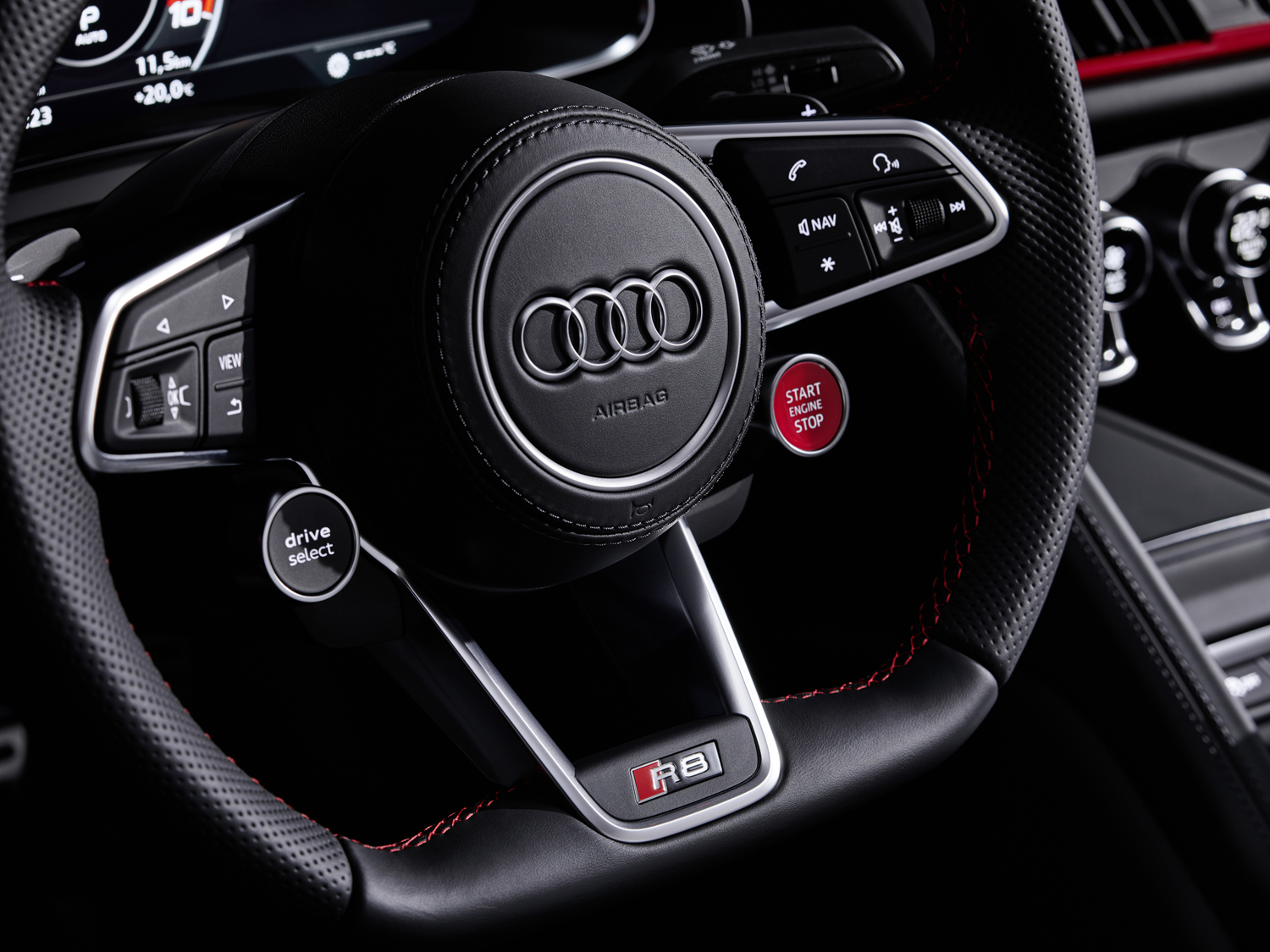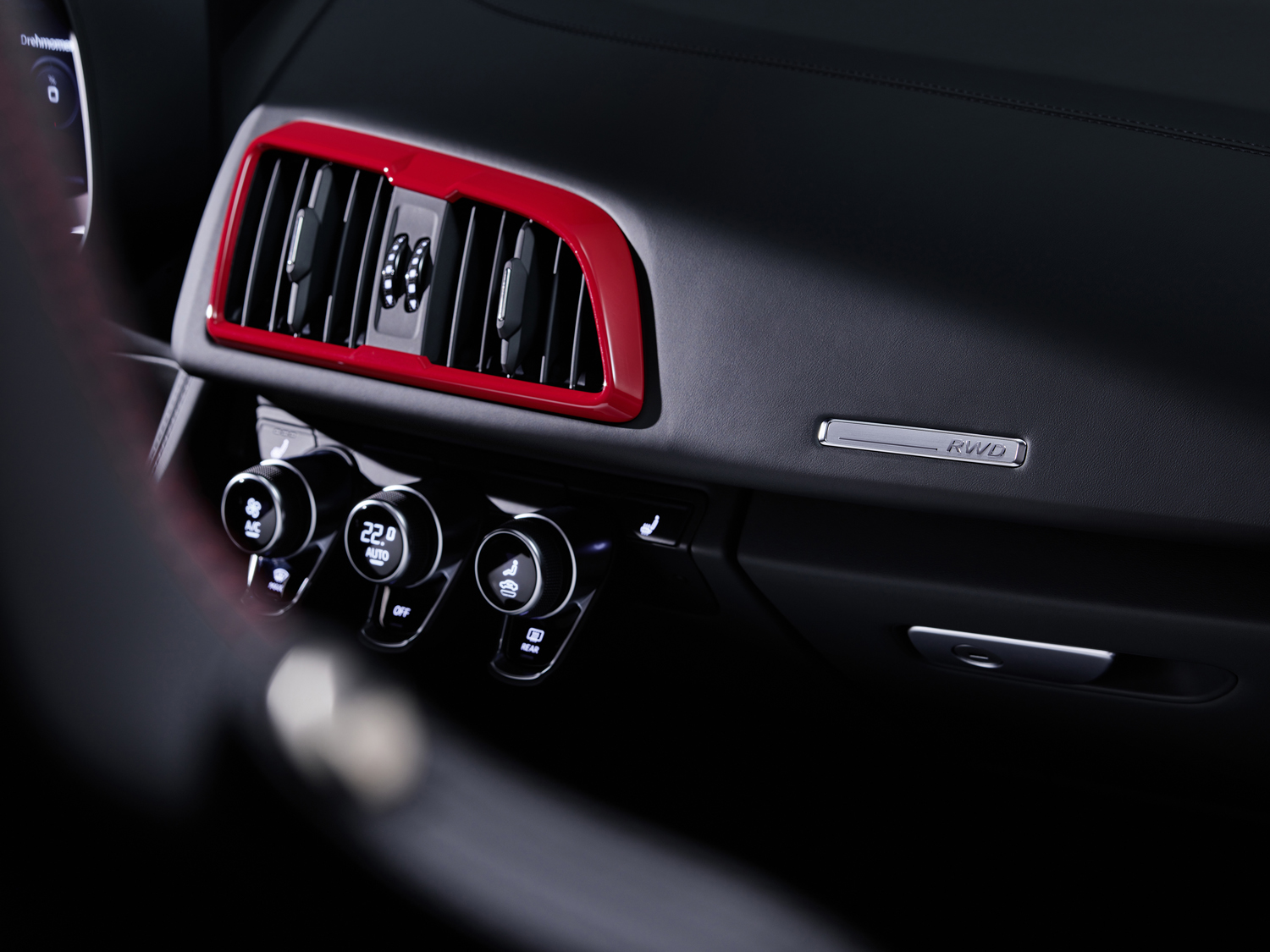Audi has transformed the limited-edition R8 RWS it unveiled in 2017 into a regular production model. The rear-wheel-drive, V10-powered supercar has only been announced for the European market, but Digital Trends learned from the German company that seeing it next to the all-wheel-drive model in American showrooms isn’t out of the question.
Years of endless rumors and speculation about an entry-level R8 end here. The model won’t get a V8, and it’s certainly not about to receive a humble V6. Enthusiasts who want a new R8 without spending $170,000 now have access to the V10 RWD model. It’s closely related to the aforementioned RWS that Audi made 999 units of, meaning power comes from a detuned version of the regular R8’s naturally aspirated, 5.2-liter V10 engine. It makes 532 horsepower and 398 pound-feet of torque. To add contrast, the same 10-cylinder delivers 610 hp and 428 lb-ft. in the all-wheel-drive model.
Less power means less fun, right? Not here. Going from all- to rear-wheel drive means Audi sent the driveshaft and the front differential it’s linked to back to the parts bin, saving 143 pounds. The rear-wheel-drive coupe weighs 3,516 pounds, while the Spyder variant tips the scale at 3,737 pounds. And, engineers programmed the electronic stability control system to allow controlled drifting when sport mode is engaged, so (hopefully) on a race track. The software knows that, if the car gets sideways, it’s because the driver is trying to have fun, and it allows high-speed shenanigans without intervening.
The easiest way to tell the rear-wheel-drive model apart from the all-wheel-drive car might be to look under it and see if the front wheels are connected to the powertrain. The two cars look almost identical, with one significant (but low-key) exception. The top part of the RWD’s side blade (the air scoop behind each door) is painted black, while it’s body-colored on the all-wheel-drive model. That’s it, unless you step inside and look for the model-specific emblem on the dashboard.
Made largely by hand, the Audi R8 V10 RWD will arrive in European showrooms in 2020. Pricing starts at 144,000 euros for the coupe, and 157,000 euros for the convertible, figures that represent about $159,000 and $173,000, respectively. American availability hasn’t been announced yet, but there’s a good chance of seeing the car here.
“We haven’t confirmed it yet for the U.S. but we are hopeful it will come to our market as well,” an Audi spokesperson told Digital Trends. We’ll update you on Audi’s first series-produced rear-wheel-drive car when we learn more.
Editors' Recommendations
- 2024 Audi Q8 e-tron first drive review: 300-mile luxury EV cruiser
- 2020 Audi A8 gains plug-in hybrid powertrain, sporty S8 model
